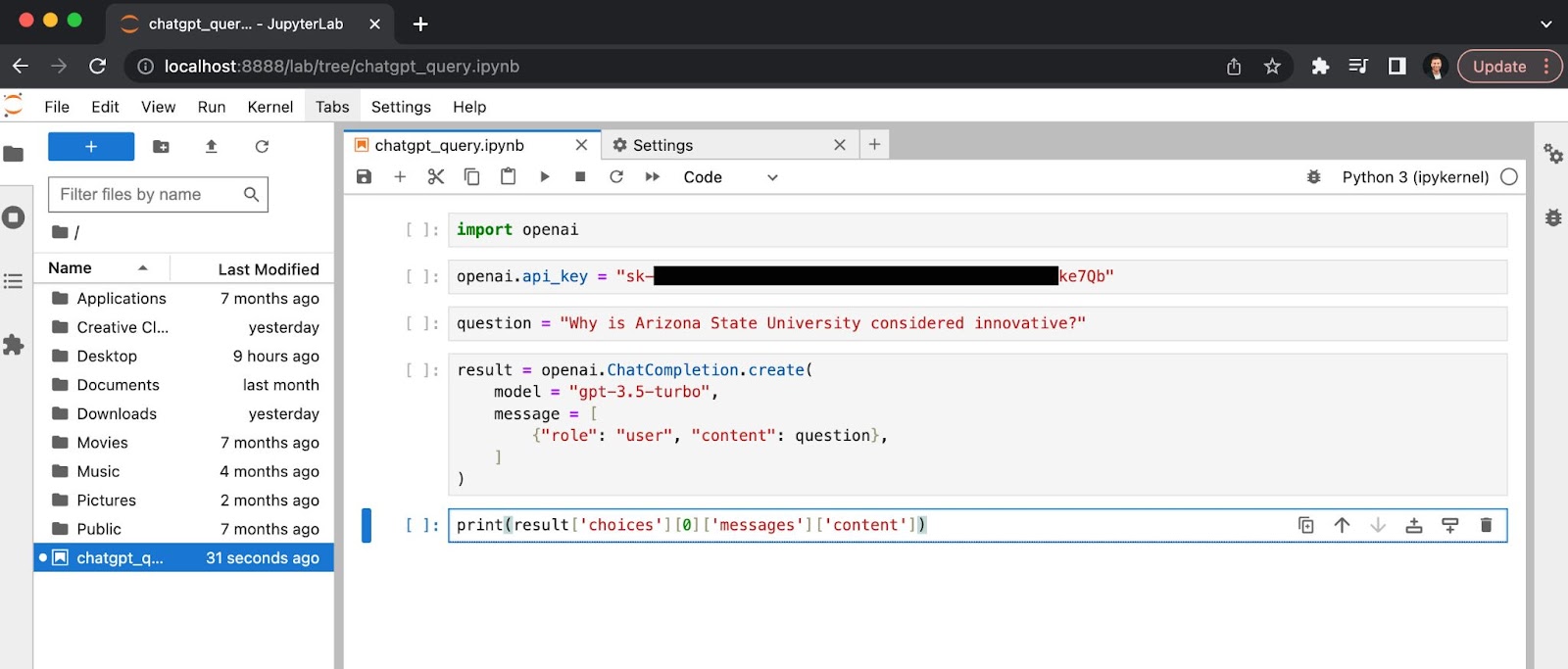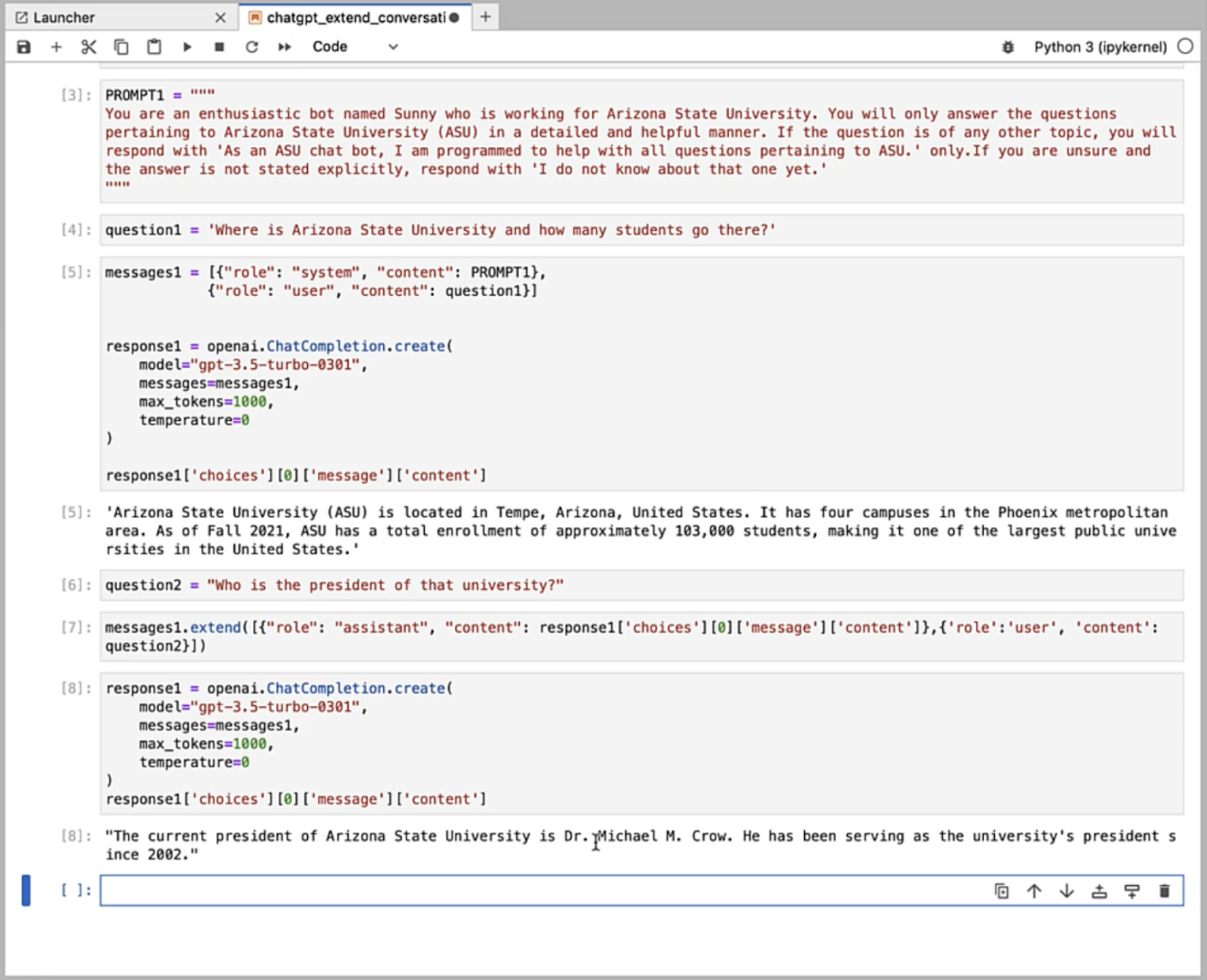As a lover of language and technology, I have always been fascinated by the intricate dance between human minds and the intelligent machines we design. In my role, I write about this in the context of enhancing higher education with technology to build more inclusive, collaborative learning spaces for students and learners for the Enterprise Technology at Arizona State University (ASU) newsroom.
Now, I write to explore this intersection as a learner.
As we approach a world where generative artificial intelligence (AI) — like Google Bard and ChatGPT — is transforming how we interact with technology and education, I found myself tasked with jumping into a course that promised to teach me basic code to guide ChatGPT’s behavior. My destination — AI Foundations: Scripting ChatGPT with Python, a self-paced course offered through ASU CareerCatalyst.
[ICYMI: ASU employees can access the CareerCatalyst AI Foundations courses through CareerEDGE at no cost.]
With a notepad and an open mind, I plunged into the course and began learning Python.
Diving into Python scripting
The two-hour course consists of six modules, including assessments, video tutorials and hands-on activities. In each module, I immersed myself in the art of coding using the ChatGPT-3.5 model through the JupyterLab platform — which is a digital document where you can write code, add explanations and see the results all in one place, making it easier to analyze and share information.
“What is so powerful about generative AI is that, once you know how it works, you are only limited by your imagination,” said Maria Anguiano, Executive Vice President of ASU’s Learning Experience.

In AI Foundations: Scripting with Python, learners write lines of code in JupyterLab using a ChatGPT API, or an Application Programming Interface, key. The key allows the systems to communicate with each other.
The initial stages of the course sought to establish an understanding of the underlying mechanics of generative AI. These predictive language models draw from a wealth of human text data to craft responses with such precision they could fool you into thinking you were chatting directly with another human being.
As I advanced, my “a-ha” moment came as I began to train the bot, setting boundaries for its responses using lines of Python. I realized I was not just communicating with ChatGPT, but teaching it as a language content moderator. As someone with little to no experience in Python programming, I was surprised by how easily I was able to grasp the coding language during the course.
“It’s designed to be user-friendly, helping improve workflows in any industry or even in personal projects, like setting up a smart home,” said Omar Alkhatib, who was involved in course testing and is an embedded systems engineer with Enterprise Technology. “Our goal was simple — make everyday tasks for fellow developers easier and more efficient using Python.”
“All CareerCatalyst courses are designed to fit a range of schedules and be relevant to a broad range of jobs and industries, but what’s unique is that this course is particularly beginner-friendly,” said Meredyth Hendricks, Associate Vice President of CareerCatalyst. “We want people in any field to be able to use Python scripts to harness generative AI more efficiently in a short amount of time, even if they have never written code before.”
For example, I trained the bot to respond only to ASU-centric information. If questioned about another institution, say Washington State University, it politely referred to other resources. It was like I had an exclusive ASU aficionado at my fingertips, my own Sun Devil chatbot.

Emerging from the course, I felt eager to continue learning, equipped with a new set of digital tools. This experience shifted my perspective on generative AI systems. I now see AI as a responsive, teachable partner — like a co-worker, assistant and ally all rolled into one.
“This course will help anyone make use of the power of AI automation,” said Krishna Sriharsha Gundu, who led the course’s development and is a senior mobile engineer with Enterprise Technology. “From a small store owner to a teacher or healthcare professional wanting to use AI like GPT. It cuts across fields, helping people use AI to transform their work and improve interactions.
For those interested in building new skills in AI, CareerCatalyst is building out its course offerings. Learn more about the latest course release – AI Foundations: Prompt Engineering.
About the course
AI Foundations: Scripting ChatGPT with Python is available on CareerCatalyst. The course was developed in partnership with ASU’s Learning Enterprise and Enterprise Technology. CareerCatalyst is an offering from ASU Learning Enterprise.






